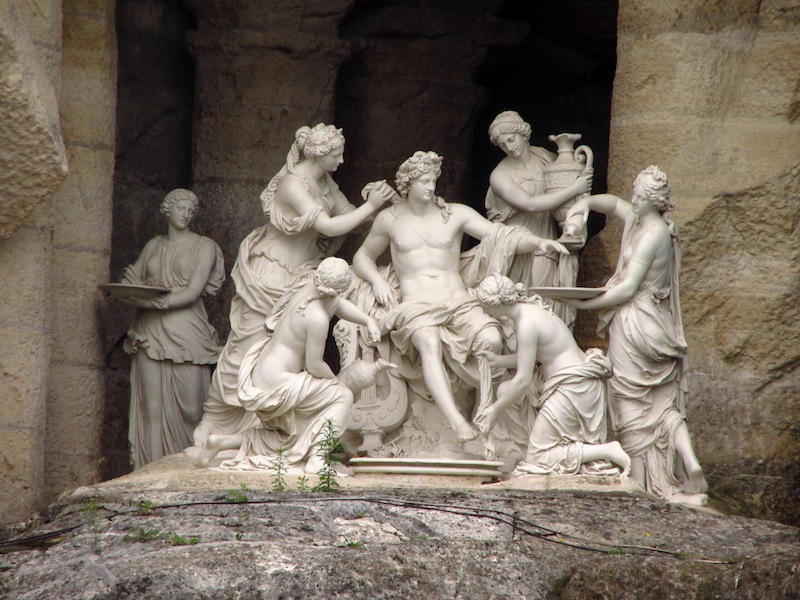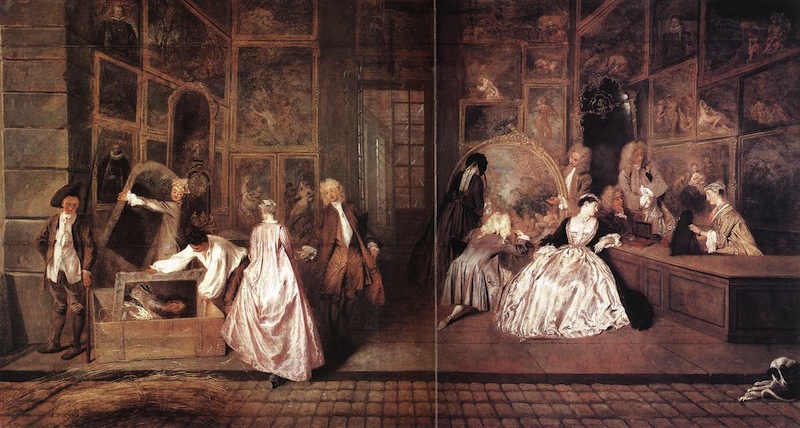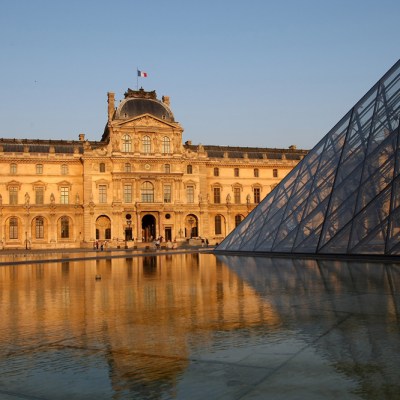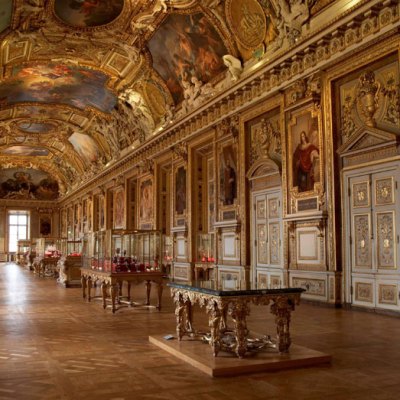From the March 2015 issue of Apollo: preview and subscribe here
The reign of Louis XIV has come to stand for the power of absolute monarchy and Versailles has long been a byword for opulence. But have we lost sight of the actual artworks and objects produced under the patronage of the Sun King?
This year marks the tercentenary of the death of Louis XIV (1638–1715) and the end of one of the most significant periods of French history. The Sun King’s reign spanned more than seven decades and shaped the political and cultural stage of Europe unlike any other. Throughout the 18th century, until the French Revolution, European princes and patrons took him as their role model, following his example of building lavish palaces and creating formal gardens that embodied the absolute power to which they aspired. Even Voltaire praised Louis XIV’s reign for its patronage of literature and the visual arts. In his introduction to The Age of Louis XIV (1751), Voltaire explained that his purpose in writing it was ‘to provide posterity with an account of the achievements of the human spirit in the most enlightened age there has ever been…and it is perhaps the one…which approaches most nearly to perfection.’
Hyacinthe Rigaud (1659–1743), ‘Louis XIV, King of France (1701), Musee du Louvre, Paris. Image: Wikimedia commons

While it may seem surprising today that the chief proponent of the Enlightenment would praise an era associated with human exploitation, religious oppression and destructive military campaigns, The Age of Louis XIV is a valuable reminder of how formative the period was for the liberal arts. Voltaire compares Louis XIV’s reign to those of Alexander the Great and Emperor Augustus. ‘Future generations,’ he notes, ‘digging among the ruins of our time, may someday discover works like the Baths of Apollo, now exposed to the weather in the woods of Versailles…If this were to happen, one may well believe that these productions of our own time would be placed side by side with the finest works of Antiquity.’ The sculpture Voltaire refers to is the work of François Girardon and Thomas Regnaudin, which shows Louis XIV in the guise of Apollo, served by six nymphs. Despite its artistic merit, compared to the Apollo Belvedere (its prime source of inspiration), the group has had a negligible subsequent influence on the visual arts. Can we therefore agree with Voltaire and consider the age of Louis XIV on a par with the Augustan era? Do the rays of the Sun King still reach us? For decades, the French 17th century was enthusiastically investigated by British art historians such as Anthony Blunt, author of the catalogue that accompanied the last UK exhibition on Louis XIV at the Royal Academy in 1958. Today, it is mostly French and German art historians who continue to study the Sun King’s artistic legacy. On the whole, however, scholarship has gone rather quiet on the subject, perhaps because it is wrongly believed that everything has already been said.
Thomas Regnaudin (1622–1706), ‘Apollo Served by the Nymphs’ (1666–75), Chateaux de Versailles et de Trianon. Image: Flickr

The end of Louis XIV’s reign, for instance, produced a picture so ingrained in our shared visual heritage that art historians have lost interest in it. Hyacinthe Rigaud’s 1701 full-length state portrait is one of the few icons worthy of the name. Reproduced in almost every textbook on French history, Rigaud’s work has turned into a visual document used primarily to introduce the concept of absolutism to teenagers. At best, the portrait is acknowledged as the model against which other royal portraits would have been measured; yet it seems to have been largely forgotten as a masterpiece of French painting in its own right. The recent move of the original canvas from the Louvre’s French Old Master galleries (where it was accessible, well-lit and hung among other portraits of the same period), into the newly reopened suite of 17th- and 18th-century period rooms, reveals today’s perception of the work: it has become a mere illustration of the king whose patronage produced the furnishings around it.
Louis XIV commissioned the portrait as a present to his grandson Philip V of Spain; it was intended as a reminder of his constant support. However, such was the success of the painting when it was exhibited to the court at Versailles, that the original remained in France and a copy was dispatched to Madrid. Rigaud became one of Europe’s most sought-after portrait painters, but his omission from the canon of great artists may be due either to the lack of excitement in his biography or to our lack of interest in and understanding of royal portraiture – or both. To the contemporary eye, the sumptuousness of portraits such as Rigaud’s may seem somewhat frivolous, almost trivial; we are overwhelmed by all the colour, opulence and fancifulness, rather as we are when looking at a gold and turquoise Sèvres potpourri vase. Rigaud’s paintings are deemed relics of absolute power rather than free artistic expressions. We are less interested in them because the artists were obliged to flatter.
Rigaud depicts Louis XIV surrounded by a rich display of dramatically draped textiles. The sovereign is dressed in his ermine and fleurs-de-lys mantel, which he would have worn only once – at his coronation almost half a century earlier in 1654. In spite of the theatricality of the composition, the crisp, cool precision with which the features are rendered led contemporaries to hail it as a realistic portrayal of the ageing monarch – especially his facial features. ‘Never has a portrait been as accomplished, or as convincing,’ declared Le Mercure de France.
Rigaud’s painting is often presented as a major pictorial example of the baroque era. However, the label ‘baroque’ sits somewhat uncomfortably here, if we bear in mind that the French Royal Academy of Painting, of which Rigaud was made a member in 1707, maintained a classical artistic syllabus, which it believed to be more faithful to its ancient role models than the Italian schools were. Of course, our somewhat artificial division between baroque and classical did not exist at the time; divisions were made between national schools, and references made to the French, Italian or German ‘taste’ or ‘manner’.
While France sought supremacy over Italy in the Ludovican era, tensions between the baroque and classical styles pervaded not only French painting, but also its architecture: is Versailles, for instance, a classical or a baroque palace? For Christopher Wren, the building lacked architectural integrity, and it was clear to him who was to blame: women. Wren wrote ‘The Palace, or if you please to call it, the Cabinet of Versailles, called me twice to see it; the mixture of brick and stone, blue tile and gold, make it look like a rich livery. Not an inch within but is crowded with little curiosities of ornament. The women, as they make here the language and the fashions, and meddle with politics and philosophy, so they sway also in architecture.’ Surely Versailles was supposed to project strength and magnificence, not weakness? Wren might have changed his views had he visited the palace 20 years later, after the erection of the so-called ‘envelope’, which wrapped the polychrome building he saw within a homogeneous façade of sandstone.
However we choose to classify Versailles, its influence was unprecedented. Some art historians worry that it receives too much credit for the development of the European country palace; the patricians of Ancient Rome and of early modern Italy had grand suburban villas long before the Sun King had risen. But the word ‘Versailles’ conveys an almost endless list of subjects and concepts: palatial architecture, absolute kingship, court etiquette, control over nature, control over people, grandeur, and megalomania…‘Versailles’ even reaches as far as 21st-century Florida. The award-winning documentary The Queen of Versailles (2012) tells the surprisingly touching story of a former beauty-pageant contestant and her husband, a time-share magnate, who set out to build the largest privately-owned house in America – known as Versailles. Building works came to a halt in the financial crisis of 2008, leaving an enormous carcass that lacked any obvious resemblance to its French model. Nonetheless, the Floridian palace is an example of how we often associate Versailles with superlatives, rather than with any specific style.
Claude Guy-Halle (1652–1736), ‘Louis XIV and the Doge of Genoa’ (detail) (1710), Chateaux de Versailles et de Trianon. Image: Wikimedia commons

Louis XIV’s historiographers felt obliged to call him ‘the greatest monarch of the universe’. His reign saw extraordinary improvements and expansions in the manufacture of French luxury goods, encouraged by the cultural and economic policies of his finance minister Jean-Baptiste Colbert (an ambitious patron himself). Yet even the funds of the Sun King were limited. In December 1689, the expense of France’s ongoing wars led to one of the most dramatic chapters in the history of the decorative arts: the melting down of Louis’ silver furniture. An unparalleled suite of tables, torchères and guéridons, produced over the course of 15 years in a joint venture between Parisian silversmiths and the Gobelins manufactory, was turned into currency to support the War of the League of Augsburg (1688–97). Prior to their destruction, the pieces had been displayed in the Salon d’Apollon at Versailles and were moved into the Hall of Mirrors when it was used as a throne room during the visits of non-Christian foreign envoys (Christian ambassadors were received in the King’s Bedchamber).
The centrepiece of the silver furniture – Louis XIV’s silver throne – has not received the broad attention it deserves and is now known only to a small group of enthusiasts. While contemporaries such as Saint-Simon, Nicodemus Tessin the Younger, and the Mercure Galant magazine described the chair as a ‘silver throne’, today’s scholars have stressed the fact that, unlike the other pieces in the suite, the throne was made of carved wood merely covered in a thin layer of silver. Only some ornaments, such as the figure of Apollo, towering on the back of the chair, were in fact cast in the solid. It may therefore be that this throne (delivered as early as 1669) escaped the tragic fate of the actual silver furniture. Indeed, had it not been for the melting down of the other pieces, the ‘so-called’ silver throne might have been replaced by a more precious structure. A royal decree of 1685 records the intention for the creation of a ‘throne of pure gold’; and in 1687, the Parisian silversmith Sylvestre Bosc received payments associated with a new throne project. While a solid silver or gold throne appears never to have seen the light of day, Claude-Guy Hallé’s depiction of Louis XIV receiving the Doge of Genoa hints at how such a chair could have looked. The entirely imaginary piece of furniture in the painting reminds us that it did not matter whether the King of France sat on a throne made of pure silver or gold, as long as people believed he did.
Jean-Antoine Watteau (1684–1721), ‘The Shop Sign of Gersaint’ (1720/21), Stiftung Preussische Schlosser und Garten Berlin-Brandenburg, Schloss Charlottenburg. Image: Wikimedia commons

Just as Rigaud’s portrait illustrates the Sun King’s absolute rule, we might regard Watteau’s final work, The Shop Sign of Gersaint (1720/21), as an illustration of the aftermath of his reign. On the right, a group
of fashionable connoisseurs admire the latest fêtes galantes; on the left, yet another version of the king’s likeness is being boxed up. Some have argued that Watteau aimed to show the turning point in French painting with the birth of the rococo; others have explained the presence of the royal portrait simply with the name of the dealership Au Grand Monarque. The ambiguity we find in Watteau’s picture may also be found in the diverse appraisals of Louis XIV’s reign. It remains unclear whether his patronage is still relevant to us and what kind of attention we should give it.
His reign has become so ossified in our imagination that we no longer look closely at the objects associated with it. But the paintings, buildings, furnishings and literary works produced over the course of his life – Le Brun’s Queens of Persia, the Louvre’s East façade, Cucci’s pietre dure cabinets for the Apollo Gallery, Racine’s Phèdre – are not just testimony of political and artistic aspirations. They are the outcome of a pursuit for excellence, even perfection. Louis XIV’s artists appear to have dealt with questions of form, colour, proportions, and technical ingenuity with that aim in mind. We have come to see the Sun King’s patronage as a shorthand for works of absolute authority against which we compare works by artists to whom we can relate more easily: Watteau, David, Delacroix…Versailles and its builder have turned into a cliché for luxury at its utmost. Perhaps it is time to turn our attention again to Louis XIV and his artists in order to recover the historical particularity of his reign from those clichés.
Wolf Burchard is a specialist on 17th- and 18th-century patronage and his online series about the legacy of Louis XIV will be published on www.apollo-magazine.com.


